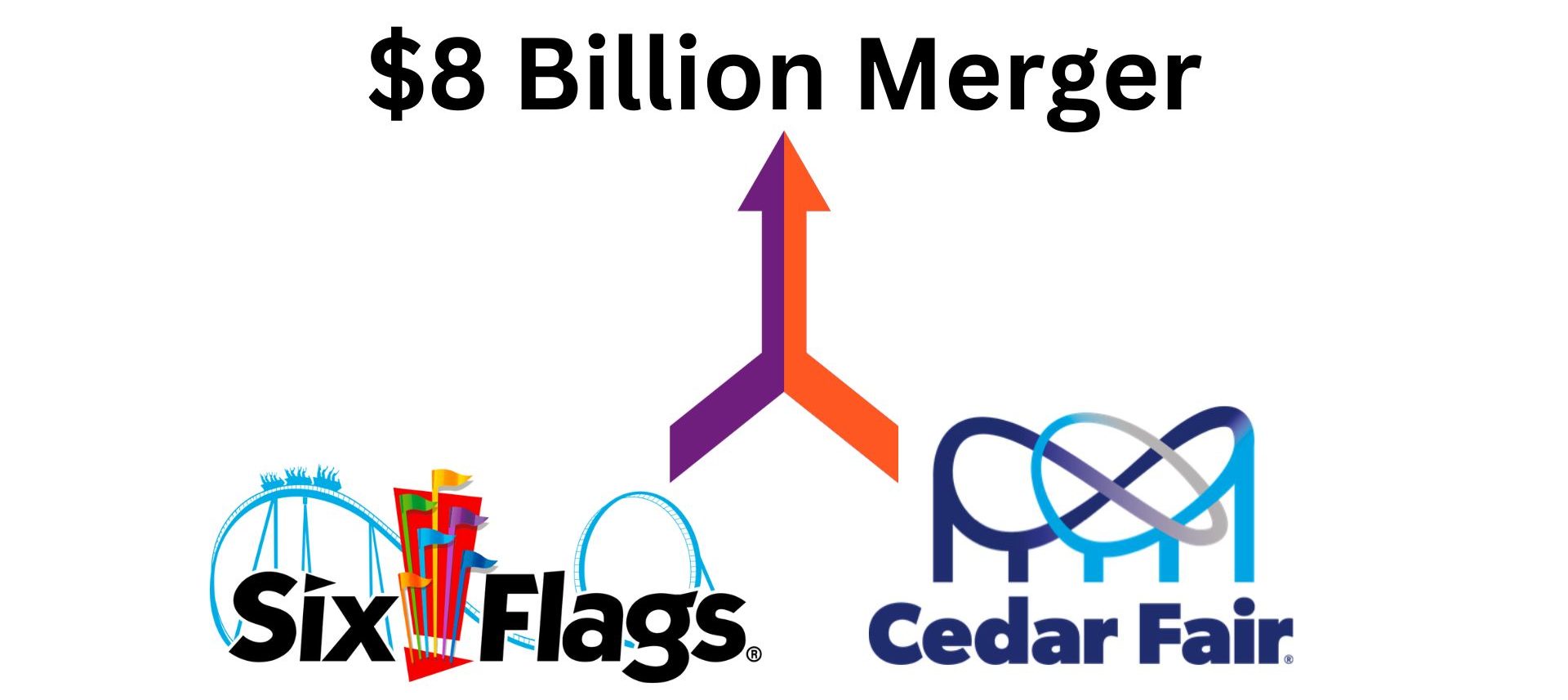
In a monumental move that is set to redefine the landscape of theme park operations across North America, two of the industry’s giants, Six Flags Entertainment and Cedar Fair, have announced their plan to merge.
The combined company, estimated to be worth around $8 billion, will operate a portfolio of 27 amusement parks, 15 water parks and 9 resort properties across 17 states in the U.S., Canada, and Mexico.
The deal underscores the industry’s pivot towards consolidation, aimed at a more robust recovery from the economic downturn caused by the COVID-19 pandemic.
Upon completion of the transaction, 51.2% of the combined entity will be owned by Cedar Fair shareholders, with the remaining 48.8% will be held by shareholders of Six Flags.
The Merger’s Strategic Importance
The merger seeks to unify the operational strengths, intellectual properties, and entertainment partnerships of both companies, thus creating a more diversified and robust operating model. With signature properties like Cedar Point, Kings Dominion, and Six Flags Magic Mountain now under one corporate umbrella, the joint entity is well-positioned to compete more fiercely in the highly competitive leisure space.
The merger is also significant due to the economic challenges posed by the pandemic. Despite an uptick in revenue, theme parks have struggled to increase attendance, a trend that starkly contrasts with other entertainment sectors that have managed to regain pre-pandemic levels. By joining forces, Six Flags and Cedar Fair hope to lower costs and streamline operations, thereby accelerating their post-COVID recovery.

What the Merger Entails
The deal, expected to close in the first half of 2024. Cedar Fair unitholders will own approximately 51.2% of the new company, while Six Flags shareholders will hold about 48.8%.
The merger is expected to yield $200 million in annual synergies, including $120 million in cost cuts and $80 million in additional earnings. The newly-formed company will adopt the Six Flags name and trade under the “FUN” ticker symbol on the New York Stock Exchange.
Leadership and Corporate Governance
Upon completion of the transaction, Cedar Fair’s CEO, Richard Zimmerman, will serve as President and CEO of the new entity, while Six Flags’ CEO, Selim Bassoul, will become the executive chairman. The newly formed board will consist of six directors from each company, ensuring equal representation and a balanced corporate governance structure.
“Our merger with Six Flags will bring together two of North America’s iconic amusement park companies to establish a highly diversified footprint and a more robust operating model to enhance park offerings and performance,” said Richard Zimmerman, President and Chief Executive Officer of Cedar Fair. “Together, we will have an expanded and complementary portfolio of attractive assets and intellectual property to deliver engaging entertainment experiences for guests. The combination also creates an enhanced financial profile with strong cash flow generation to accelerate investments in our parks to delight our guests, driving increased levels of demand and in-park value and spending. I have great respect for the Six Flags team and look forward to joining forces as we embark on this next chapter together.”
Future Operations and Strategies
The combined company will continue to operate its extensive portfolio of parks and resorts across North America. Importantly, no park closures are currently planned or anticipated as a result of the merger. Instead, the merged entity aims to leverage its shared resources and expertise to accelerate investment in park enhancements, improve food and beverage options, and enhance technology.
For park-goers, this could mean quicker access to new rides, more diverse food and beverage selections, and a more streamlined guest experience. For the theme park industry at large, this merger could signal a shift towards more strategic consolidation and collaboration, potentially setting a precedent for future partnerships and acquisitions.
Impact on Shareholders and Industry Outlook
The shareholder mix post-merger is expected to reflect the “merger of equals” nature of this deal. Cedar Fair unitholders will receive one share of common stock in the new combined company for each unit owned, and Six Flags shareholders will receive 0.5800 shares of common stock in the new combined company for each share owned.
In terms of industry outlook, the merger is anticipated to bolster the combined entity’s competitive position in the theme park space, providing a stronger platform to compete with rivals like Disney and SeaWorld. Furthermore, the merger could potentially trigger a wave of consolidation within the industry, as other operators seek to replicate the strategic benefits of this landmark deal.
Regulatory Approvals and Closing
The merger’s completion is contingent upon receiving regulatory approvals, including the green light from Six Flags shareholders. With the combined companies having minimal market overlap, the deal is expected to withstand regulatory scrutiny. If all goes as planned, the merger will close in the first half of 2024, marking a new chapter in the history of North American theme park operations.
Conclusion
The merger between Six Flags and Cedar Fair represents a significant milestone in the theme park industry, signaling a strategic shift towards consolidation in the face of post-pandemic recovery challenges. With the combined strength of two industry giants, the new entity is well-positioned to compete more fiercely in the highly competitive leisure space, promising an enhanced experience for park-goers and potentially reshaping the landscape of theme park operations in North America.
